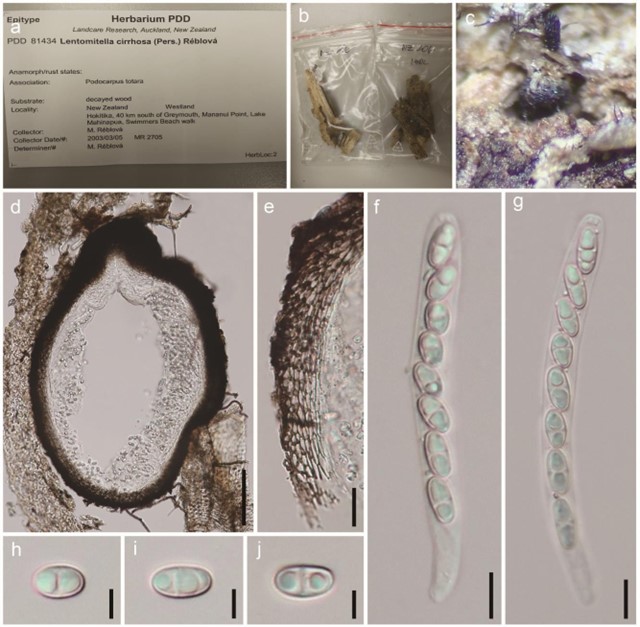Lentomitella Höhn., Annales Mycologici 3 (6): 552 (1906)
MycoBank number: MB 2736; Index Fungorum number: IF 2736; Facesoffungi number: FoF 05406; 11 morphological species, 9 species with sequence data.
Type species – Lentomitella vestita (Sacc.) Höhn.
Notes – Lentomitella was introduced by von Höhnel (1905) who segregated this genus from Ceratostomella Sacc. based on the ornamentation of the ascospores of C. vestita as Lentomitella vestita. Lentomitella can be distinguished from Ceratostomella by asci, ascospores and the centrum (Réblová 2006). Lentomitella was historically assigned to Lasiosphaeriaceae (Untereiner 1993) and Clypeosphaeriaceae (Barr 1990b, Eriksson et al. 2003). Réblová (2006) reinstated Lentomitella with three accepted species, L. cirrhosa, L. crinigera and L. tomentosa, and their phylogenetic analyses showed Lentomitella resided in Sordariomycetes incertae sedis. Réblová et al. (2018) divided Ceratostomella species and other similar taxa into four genera, Calyptosphaeria, Lentomitella, Spadicoides, and Torrentispora, which represent Xenospadicoidaceae.
Lentomitella cirrhosa is saprobic on decaying wood. Since the type specimen of L. cirrhosa is unavailable, Réblová (2006) designated a collection from New Zealand on decayed wood of Podocarpus totara (PDD 81434) as the epitype. Sphaeria cirrhosa was accepted in Ceratostoma by Fuckel (1870). However, Saccardo (1882) transferred S. cirrhosa to Ceratostomella as C. cirrhosa. Réblová (2006) again transferred C. cirrhosa to Lentomitella.

Figure 263 – Lentomitella cirrhosa (Material examined – NEW ZEALAND, Westland, Hokitika, 40 km S of Greymouth, Mananui Point, Lake Mahinapua, Swimmers Beach walks, on decayed wood of Podocarpus totara, 5 March 2003, M. Réblová, M.R. 2705, PDD 81434, epitype). a Herbarium packet. b Herbarium material. c Ascoma on the host. d Ascoma in cross section. e Peridium. f, g Asci. h-j Ascospores. Scale bars: d = 100 μm, e = 20 μm, f, g = 10 μm, h-j = 5 μm.
Species
